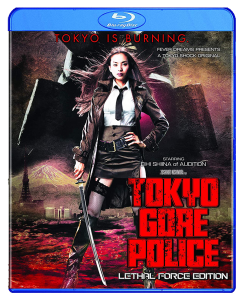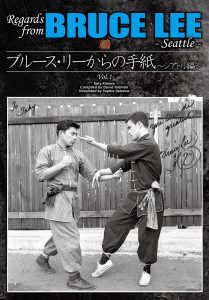
The Different Types of Ammo Explained: An Extensive Guide
While it’s fairly easy to understand the differences between the various types of guns out there, it’s not so easy when it comes to the different types of ammo. Interestingly enough, the word “bullet” comes from the Middle French word, “Boulle,” which stands for small ball. The first kinds of bullets were muzzle-loaded with a small ball and cap at the tip and a big paper cartridge.
Each type of early bullet has a certain function, such as defense training, hunting, target shooting, and warfare. It should also be noted that bullets and cartridges are not the same things.
We understand that there’s a lot going on here, but it’s actually not as complicated as it appears. So continue reading, and we’ll walk you through everything you need to know.
What Is Caliber?
When someone is talking about caliber, they’re actually talking about the diameter of the barrel. The bullet is simply the metal projectile that travels through the barrel while that entire unit is referred to as the cartridge.
Essentially, you can imagine the bullet as the object that’s going to hit your target. Everything else is just helping the bullet get there.
Basic Bullet Terminology
Ammo is usually described by using the diameter to length ratio measurement. For example, 6.55x54mm is actually 6.55mm wide and 54mm long.
When it comes to shotgun shells, we measure those in gauge. The higher the number, the smaller the diameter of the shotgun shell. So if you have a 12 gauge shell, that would be that it’s about 2.5in or 70 MM long.
The Components of a Cartridge
When most people think of a bullet, they’re actually thinking of a cartridge. A cartridge is made up of four parts.
The primer is the ignition that will help to power the propellant or the explosive. The propellant is simply gun powder. There’s also the case, which is usually made out of steel, brass, or nickel.
Lastly, the tip of the cartridge is referred to as the projectile.
Types of Bullets
Bullets come in a variety of different flavors. The majority of these types can be described with acronyms. Let’s look at some of the most popular types of bullets below.
The SP (Soft Point) is a jacketed expanding bullet. It’s made up of a soft metal core. The core is encased in a strong metal jacket that is left exposed at the front tip.
The AP (Armor Piercing) isn’t made out of lead but instead has an alloy core. These bullets are meant to shoot through thick armor.
A BT (Boat Tail) bullet means that the rear end of the cartridge has a tapered design. This helps the projectile to stabilize itself while in flight.
Lastly, the BTHP (Boat Tail Hollow Point) bullet is a boat tail with a hollow point.
Rimfire Vs. Centerfire
By learning about the differences between rimfire and centerfire cartridges, you’ll be able to better grasp how ammo can be differentiated. With a rimfire gun, the firearm strikes the rim of the cartridge so that the primer can be ignited. With a centerfire weapon, the firing pin hits the center primer.
A small cartridge without any visible primer is most likely a rimfire cartridge. A cartridge with a circular primer at the center of the casing is centerfire.
How Bullet Calibers Work
We already know that bullets vary in size and measurement. There is also the grain, which is used to describe the weight of the bullet. One pound is equal to 7,000 grains.
The heavy your bullet is, the more impact it will have. If you’ve ever heard the term “stopping power,” that is most likely referring to a high weight density. It can also refer to a weapon that is specially designed to inflict greater damage.
Below, we’re going to go over some of the most popular types of ammo and how they differ.
.22LR
The .22LR is one of the most popular calibers sold throughout the world. The average weight of this bullet is between 20 and 40 grains and it can be shot in pistols and rifles.
With this caliber, recoil isn’t a problem. This makes it great for beginners or for people who still are getting used to shooting firearms.
These bullets are also extremely popular because of their low cost. Youth shooting programs almost always use .22LR bullets because they’re only a tad more powerful than a pellet gun.
Military and heavy-duty weapons don’t use this type of ammo and it doesn’t offer any kind of stopping power in self-defense scenarios.
.380 ACP
The .380 ACP is a lot more powerful than the .22LR. At close range, it creates very powerful penetration. There also isn’t much recoil with this bullet.
People also refer to this bullet as the “nine,” and it has become extremely popular for small pistols that can be carried in concealed holsters. It’s a bit more expensive than the .22LR bullet and costs around $0.30 per round.
9MM
The 9mm is one of the most recognizable bullets in the world. It was originally known as the 9MM Luger which was a German weapon. These days, most people just refer to it as a “nine mil.”
This is the go-to bullet for most shooters and it’s also used by law enforcement as well as military units around the world.
Interestingly enough, the 9mm is actually the exact same size as the .380 and the .36. The difference between these bullets is the firepower in the cartridge. A standard 9mm round weighs anywhere between 115 and 150 grains, which makes it quite powerful for its small size.
.40 S&W
The .40 S&W is more powerful than the 9MM. This bullet was originally designed to be used by the FBI and quickly gained popularity around the world. It usually weighs between 160 grains and 180 grains.
Thankfully, despite its larger size, it still costs around the same amount as the 9mm.
.45 ACP
The .45 ACP was first designed and built by John Browning, who was also the inventor of the 1911 pistol. That type of pistol is one of the oldest and most reliable pistols ever made.
The .45 ACP is a powerful bullet that is used by shooters who want to pack a serious punch. It’s relatively expensive and costs $.40 per round, but most professionals would agree that the price is well worth it.
.38
The .38 is meant to be used in revolvers. The cartridge is fairly long and contains a lot of gun powder. This makes it a slower and heavier bullet when compared to something like the 9mm.
This kind of bullet is often used by tactical teams as well as the FBI. This bullet is nearly identical to the .357 magnum, except this bullet is a bit shorter.
7.62X39MM
This round is a Soviet bullet that was meant to be used in the AK-47. It has some serious firepower behind it and the recoil isn’t all that bad.
This bullet weighs around 120 grains. And thanks to the fact that there is a surplus of this bullet currently on the market, it’s actually very affordable.
5.56X45MM/.223
These two bullets have nearly identical dimensions. The .223 ammo has a slightly lower pressure than the 5.56. This means that the .223 bullet can be used with a 5.56 gun.
These bullets provide moderate recoil and generally weigh around 55 grains. If you’ve ever used an old school M4, AR15, or M16, then this was the kind of bullet that you used. These bullets usually cost around thirty cents per round.
12 Gauge Shotgun Shell
Everyone has heard of the 12 gauge shotgun. Like we noted earlier, the 12 gauge is actually pretty big. And a 10 gauge shotgun is even bigger.
Shotgun ammo varies depending on what you’re planning on using the weapon for. Birdshot is the most common type of shotgun ammo and contains many small balls of metal. Buckshot is the same as birdshot except the metal balls are a lot bigger.
A slug is a solid piece of metal that usually weighs one ounce. Slugs and buckshot are going to provide you with the heaviest firepower for shotguns.
Different Bullet Casings and What They Do
Now, were going to go over the different types of bullet cases. This will help you further differentiate the kinds of ammo and understand how they work.
Full Metal Jacket
The term “full metal jacket” is perhaps most well-known thanks to the Vietnam war film directed by Stanley Kubrick – Full Metal Jacket. However, this is also one of the most popular types of bullets.
The interior is made up of a soft metal core, like lead. That core is then surrounded by copper or some other dense metal.
These bullets are usually pointy but they can also be flat sometimes. Full metal jacket rounds typically shoot right through an assailant. They also make only a small entry wound but a large exit wound.
Full metal jackets are fairly inexpensive but pack a powerful punch.
Hollowpoint Rounds
Hollowpoint, or HP, rounds are nasty. These little guys are meant to expand after they strike their target. They provide some dangerous stopping power and are a popular bullet of choice for concealed weapons owners, tactical units, and special forces.
Open Tip Match
An Open Tip Match – or OTM – bullet has an opening near the top. This makes it look similar to an HP round. However, these tips are too small to expand after impact.
These bullets are usually used by long-distance shooters.
Ballistic Tip Rounds
A ballistic tip round takes the aerodynamics of a full metal jacket round and combines it with the construction of the HP rounds.
These bullets are usually used by hunters. If you look at the bottom of a ballistic tip round, you’ll that it’s more streamlined. This prevents drag when the bullet moves through the air.
Soft Point Rounds
Soft point rounds are a lot like full metal jacket rounds except the soft point part of the lead at the tip is left exposed. The point of this is that the lead should flatten upon impact.
Slug Vs. Shot
A slug is basically just a big bullet. Shot, however, is made up of a bunch of tiny little projectiles. Both types of cartridges use the kinds of components, though.
Earlier, we went over the four different parts, primer, powder, case, and projectile. The majority of ammo cartridges only contain just a single projectile. These are referred to as slugs or bullets.
Shotgun bullets, on the other hand, are known as shot. Thus, this is why we call it a shotgun.
Inside of a shot cartridge are hundreds of little balls that are made out of metal or lead. These balls spread over a wide area after they’re fired.
One of the benefits of using this type of cartridge is that it allows a moving target to get hit more accurately rather than just trying with a single bullet. Shotgun shells are usually made out of plastic and have a backing made out of brass, where the primer is contained.
The Importance of Knowing About the Different Types of Ammo
Guns are essentially worthless without ammunition. And by knowing about the different types of ammo out there, you can more effectively use your firearms and optimize your accuracy and power. Hopefully, after reading the above, you now feel that you can make more informed and educated purchasing decisions when it comes to ammo.
Are you looking to read other helpful articles about firearms? If so, check out the rest of our blog today for more!
 Hardwood floors are one of the top features that buyers look for when purchasing a home.
Hardwood floors are one of the top features that buyers look for when purchasing a home.





















Be the 1st to Comment